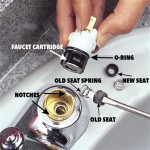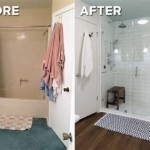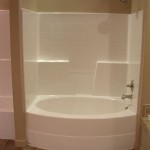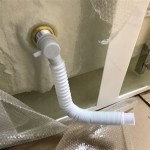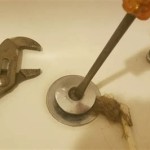How To Install A Sunken Bathtub In Japan
Installing a sunken bathtub in Japan requires careful planning and execution, adhering to specific building codes and cultural practices. This process typically involves professional contractors, but understanding the steps involved can facilitate smoother communication and project management.
Initial Consultation and Planning: The first step is engaging a qualified architect or contractor specializing in bathroom renovations. They will assess the existing bathroom space, considering factors like plumbing and ventilation, and discuss design preferences. Crucially, they will also navigate the legal requirements, including building permits and compliance with Japanese building codes. Detailed blueprints are then drawn, incorporating precise measurements and specifications for the chosen bathtub.
Demolition and Preparation: Once the plans are finalized and permits obtained, the existing bathroom fixtures are carefully demolished and removed. This includes disconnecting plumbing lines and ensuring proper disposal of debris in accordance with local regulations. The subfloor is inspected for damage and repaired or reinforced as necessary to support the weight of the filled bathtub. Precise leveling is critical at this stage to prevent future issues with drainage and stability.
Plumbing and Drainage: Installing the necessary plumbing infrastructure is a crucial step. This involves positioning drainpipes and water supply lines according to the bathtub's specifications. Japanese bathrooms often feature specific drainage systems, including a dedicated floor drain, which must be integrated seamlessly with the bathtub's plumbing. Pressure testing is conducted to ensure leak-free connections and compliance with regulations.
Framing and Support: Building a robust supporting frame for the sunken bathtub is essential. This frame, typically constructed from pressure-treated lumber or metal, is designed to bear the weight of the tub, water, and occupants. The frame's dimensions must precisely match the bathtub's footprint, ensuring a secure and level fit. Insulation may be added within the frame to improve heat retention and reduce noise transmission.
Bathtub Installation: The chosen bathtub, often made of acrylic, cast iron, or steel, is carefully lowered into the prepared frame. Leveling adjustments are made to ensure the bathtub sits perfectly even. This process requires precision and careful handling to prevent damage to the tub or surrounding structures. Once positioned, the bathtub is secured to the frame following the manufacturer's instructions.
Connecting Plumbing and Fixtures: With the bathtub secured, the plumbing connections are finalized. This includes attaching the drain assembly, overflow pipe, and water supply lines. Faucet installation and showerhead placement (if applicable) are also completed during this phase. All connections are thoroughly tested for leaks and proper functionality.
Waterproofing and Tiling: Comprehensive waterproofing is vital in Japanese bathrooms to prevent water damage and mold growth. A waterproof membrane is applied to the surrounding walls and floor area, extending beyond the edge of the bathtub. This membrane is carefully sealed to prevent water seepage. Tiling is then applied over the waterproof membrane, creating the final aesthetic finish. The tile selection and pattern are often chosen to complement the bathtub and overall bathroom design.
Grouting and Sealing: After the tile adhesive has cured, grouting is applied to fill the spaces between the tiles, providing a watertight seal and enhancing the aesthetic appeal. A sealant is then applied to the edges of the bathtub where it meets the tile, creating a final barrier against water intrusion. This meticulous sealing is crucial for long-term durability and preventing moisture-related problems.
Finishing Touches and Inspection: Final touches include installing any remaining fixtures, such as towel racks, soap dishes, and lighting. A thorough inspection is then conducted to ensure all aspects of the installation meet building codes and quality standards. This inspection may involve local authorities and the contracted professionals. Once approved, the newly installed sunken bathtub is ready for use.
Maintenance Considerations: Regular maintenance is essential for the longevity of a sunken bathtub. This includes cleaning the bathtub and surrounding tiles with appropriate non-abrasive cleaners, inspecting and cleaning the drain regularly to prevent clogs, and periodically checking the sealant around the bathtub for any signs of deterioration. Addressing any issues promptly can help avoid costly repairs and maintain the bathtub's aesthetic appeal and functionality.
Choosing the Right Bathtub: The selection of the bathtub itself is an important consideration. Japanese bathtubs often prioritize deep soaking and relaxation, with features like built-in seating and contoured shapes. Material choices influence both aesthetics and practicality, with each option presenting different advantages in terms of durability, heat retention, and ease of maintenance.
Ventilation: Proper ventilation is crucial in Japanese bathrooms to prevent moisture buildup and mold growth. This often involves installing an exhaust fan vented to the exterior of the building. The fan's capacity should be appropriate for the bathroom's size and ensure adequate air circulation.

What Is A Sunken Bathtub Introduction And Examples Badeloft

48 Dreamy Sunken Bathtubs To Relax In Digsdigs

Sunken Bathtub With Steps Why Are They Gaining Popularity Decoholic

48 Dreamy Sunken Bathtubs To Relax In Digsdigs

What Is A Sunken Bathtub Introduction And Examples Badeloft

48 Dreamy Sunken Bathtubs To Relax In Digsdigs

Ergonomic Sunken Bathtub Installation By Rexa Puts Bath Accessories Within Reach

Sunken Tub Asian Bathroom San Francisco By Kwan Design Architects Houzz

Sunken Bathtub With Steps Why Are They Gaining Popularity Decoholic

48 Dreamy Sunken Bathtubs To Relax In Digsdigs
Related Posts


